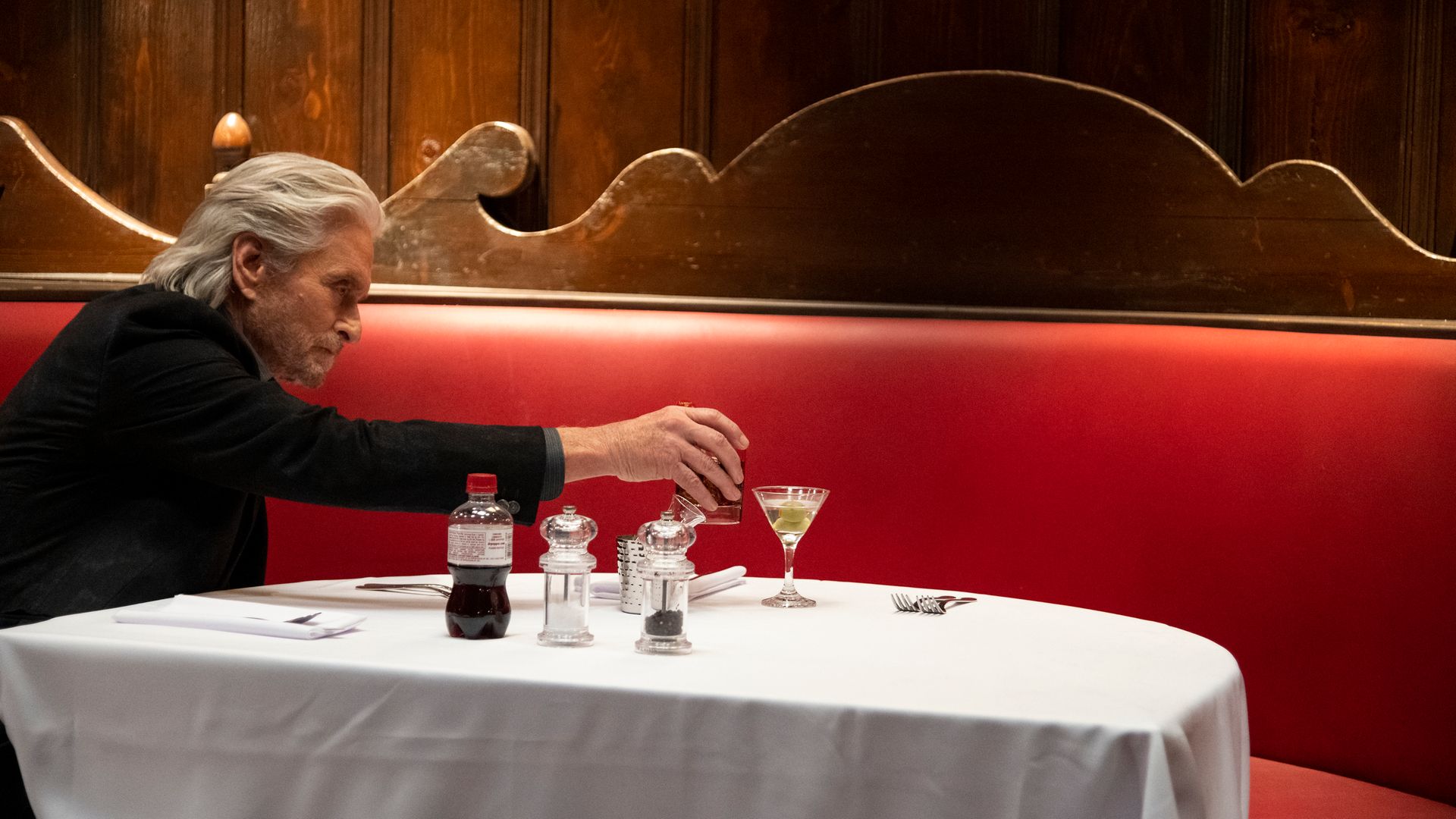
The Kominsky Method is surprisingly thoughtful in the way it grapples with the fundamental fragility of friendship and getting old – if you can ignore the unnecessary swipes against the young
When I first watched The Kominsky Method I did so with the full expectation that it would melt into the indistinguishable coterie of bland, almost quality-less, American media about rich middle-to-late aged people which I both treasure and despise. I am a sucker for a Nancy Meyers film, for instance, where Meryl Streep or Diane Keaton float around gargantuan kitchen islands sighing over their ex-husbands and pastries they can’t get to rise quite right.
I love the insultingly low stakes of this class of film – yes, your husband might have left you for someone perkier and stupider but surely the hordes of identically handsome children and the rustic mansions filled with charming knick-knacks provide enough solace that infidelity is basically irrelevant. What I like about this kind of media are exactly those low stakes, which mean I never feel anything much for anyone and can instead regard their grandiose domesticity and bourgeois marital woes with idle envy.
The Kominsky Method, of which Netflix has recently released the third and final season (and for which there are spoilers ahead…), is primarily about two snarky seen-it-all Hollywood veterans in their later years. Sandy Kominsky (Michael Douglas) is a formerly legendary acting coach who has now been reduced to instructing vapid advert-star wannabes.
His urination is out of control, he has three failed marriages, his declining body can’t keep up with a still-torrid sexual appetite, and his long suffering daughter Mindy barely tolerates him. His friend and agent of many decades, Norman Newlander, is played beautifully by Alan Arkin. Norman is a showbiz grouch of the old style, setting up shop in the same bar’s same red vinyl booth each week with a martini in hand. But at the beginning of season one, we see his well-worn ironic cynicism punctured by genuine anguish when his wife of 50 years dies.
Held against the other major Netflix series about older people. Grace and Frankie, The Kominsky Method is often a comparative masterclass in subtlety and restraint. Both are to be admired in some ways for normalising the vagaries of age and underlining the point that to become older does not necessitate one abandoning desire or adventure or indeed petty spite and malice.
But Grace and Frankie – about two women in their seventies and eighties who become friends and move in together after it is revealed their husbands are gay and in love – often wields its lessons with a borderline slapstick heaviness of hand. They are imparted in comedic set pieces which have a distasteful hint of the wink and nudge to them, and sometimes sexual references feel calculated for bawdy eyebrow raising from an audience which is made up dominantly of a younger demographic than that shown in the programme.
The Kominsky Method is by no means free of distasteful gags, a point which I will return to later, but what it does boast are two lead characters who feel authentic and rounded in a way Frankie and Grace do not. Their ageing, combative, but utterly devoted friendship is sincerely moving. Both actors are excellent here but Arkin in particular is effortlessly expressive and endlessly charming with his precise, wry cantankerousness.
The depth of their connection is obvious and beguiling to the viewer, a rare glimpse at what a truly meaningful committed non-romantic relationship might look like in later life. This is why, in the first episode of season three, it is genuinely quite shocking and stark to see that Norman has died in the interim since season two, and Sandy is speaking at his funeral.
True to form he gives an ambivalent, rude eulogy about this great friend of his who also drove him insane, but it was the scenes after the funeral which I found to be most poignant. Sandy glares at his daughter and her fiancee as they drive him home from within his haze of grief, resenting anyone who isn’t himself or his dead friend.
He stands wincing on his deck swallowing tightly and trying to accept the reality of a world without friendship of a substantial kind. He goes to Norman’s favoured red booth and drinks a martini in his honour, making a joke and looking away quickly when a waiter speaks kindly of him.
There is something very real and interesting here, which is the question of later friendship in an unconventional life. Sandy has been unsuccessful in establishing a family unit. He has a career, but not the kind he wants. And yet what he did have was his friend, and without minimising the importance of friendship, a friend does act as a consolation when those other, supposedly more important parts of our life – romance, children, jobs – are not going so well. “Perhaps I’m not thriving as a father or partner or actor,” one might reasonably think, “but at least I have my friend”.
And then one day you don’t. Of course we all go the same way, but it almost seems doubly unfair that one should lose the baseline, the perennial consolation and comfort which acts to make up for other, more traditional losses.
There is so much to admire and like, so many earnest attempts to highlight how frightening and lonely it is to reach the end stage of your life and begin to lose its core components. It’s a shame that these efforts are sometimes egregiously undermined by a bizarre fixation on how idiotic younger generations are.
This is mostly expressed through the vapidity of Sandy’s students, who all expect to be movie stars without much work and without accruing many skills. It also takes a really quite odd fixation on gender and pronouns.
This culminates in a tonally misfiring satirical scene which shows Morgan Freeman playing a non-binary gendered pathologist who uses increasingly farcical sentence constructions – a way, one supposes to show that any gender expression outside the classic kind is too absurd and difficult to parse for any normal people to get it.
It’s a pity the show’s creator Chuck Lorre, 66, decided to include these small and insignificant scenes which nevertheless leave a bad taste in my mouth. After all, young people will get old too, the snowflakes and the actors and the gender-fluid, all of us will have to grapple with the isolation and angst that is so well drawn at times here.
The Kominsky Method Season 3 is streaming now on Netflix










